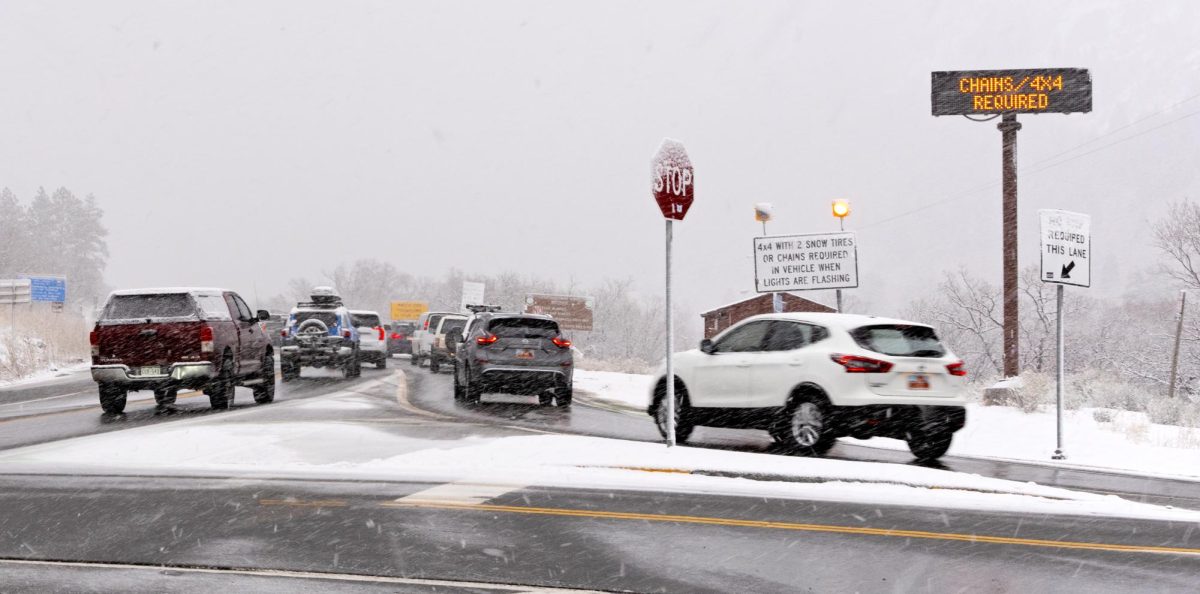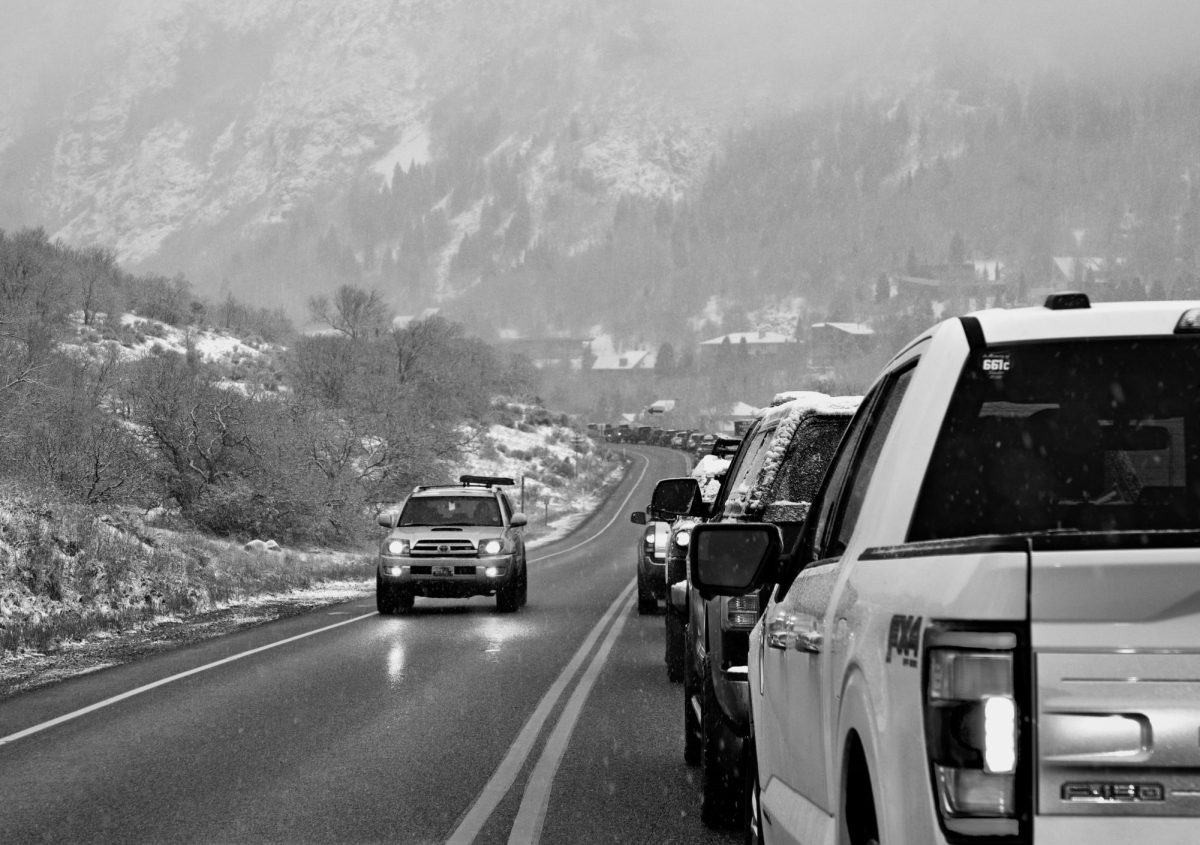Both an international tourist attraction and a local treasure, Little Cottonwood Canyon is famed for its powder-like snow and grandiose peaks. Beautiful yet powerful, they drive an incredibly destructive natural phenomenon — avalanches. According to Utah Department of Transportation spokesman John Gleason, LCC is the most avalanche-prone area in North America.
Due to avalanche-induced road closures as well as extreme traffic congestion issues, UDOT is proceeding with what will be the world’s longest gondola. Building the gondola may soon cost taxpayers $728 million, but the only phase of UDOT’s project that has been allocated funding involves enhancing bus services and a mobility hub. While the gondola might shift traffic off the roads, it has serious implications for the preservation of our watershed and problematically prioritizes private resorts over non-resort recreation in LCC.
Those in pursuit of resort skiing are not the only visitors to Little Cottonwood Canyon. Non-resort users who recreate elsewhere, as well as mountain employees and general community members, are just as impacted by any transportation decision made. While concern for the natural beauty and protection of the canyon is vital, it is also necessary to value personal safety and the worker experience — ideas often overlooked as the community considers the best path forward.
LCC Winter Road Conditions Threaten Public Safety
Dave Fields, general manager of Snowbird ski resort, previously mentioned that traffic congestion has been an issue in Little Cottonwood Canyon since mining days. Those traveling in pursuit of quality snow create delays on top of another concern — the safety hazards of winter road conditions. UDOT has a traction law, which requires appropriate traction devices and tire quality applicable to the road’s present condition. However, it’s not uncommon for individuals to neglect traction laws and attempt to travel the canyon without the proper safety tools.
We must not risk suboptimal safety measures with a canyon characterized by one of the world’s highest avalanche rates. This past winter season produced 98 avalanches in LCC alone.
The winter of 2022-23 continues to linger in the minds of those who frequent the canyon, particularly skiers, snowboarders and other outdoors enthusiasts. On several occasions, UDOT made the decision to close canyon roads for avalanche mitigation. The massive clearings visible from the road, where trees used to densely stand, are reminders of the terrifying power of the mountains we’re at the mercy of.
Utah’s recent and historic snow season indicates the necessity of revisiting canyon transportation options. Personal safety is at risk not only when road conditions are poor, but when a massive exodus of private vehicles flood up the mountain without the appropriate traction devices. Public transportation options, gondola or otherwise, must be immediately prioritized if we intend to address traffic congestion and road safety concerns.

Canyon Road Closures Affect Mountain Employees
Some of those most impacted by winter road conditions in LCC are ski resort employees. Sophia Paradis, a seasoned employee at Snowbird Ski Resort, described what the 2022-23 season looked like off the slopes.
“For the most part, [departments] do quite a good job of giving an option to [return down canyon],” Paradis said. “But this year, there were a lot of involuntary overnight stays.”
Overnight stays at mountain resorts occur when canyon road closures prevent employees from returning home. Snowbird employees faced multi-day stretches of involuntary overnights on at least two separate occasions this season, Paradis said.
Paradis, who was finishing her senior year of college last winter season, explained the effect the road closures took on her personal life and the lives of her coworkers.
“It takes a toll when your shift turns into 12 or 14 hours,” Paradis said. “It also took a pretty massive toll on most full-time employees’ mental health.”
Historically, overnight attendance at the resorts has always been a reality for employees. But, as Fields told Ski Area Management in July, “As UDOT deals with the increased pressure on the canyon due to Utah’s population growth, we’re seeing an increased reliance on overnight closures.”
For mountain employees like Paradis who have important obligations down canyon — whether it be school, health or childcare — extended overnight stays might not be sustainable long term. This makes the gondola a potentially viable solution, but the realities of lift operation might say otherwise.
“No matter what transportation you’re using to travel up the canyon — whether it’s busing, private vehicles or a gondola — it’s all going to be impacted by avalanche activity,” Paradis said. “In high winds, or crazy winter storms, you’re not going to be able to run a gondola.”

Humanity and the Natural World
The LCC winter road crisis deserves immediate attention. While the conversation around it has often been framed as traffic mitigation versus environmental protection, there are several more factors at play. Employee mental health and working conditions are deeply affected as they operate around canyon closures. The demand for resort use likewise exceeds the capacity of our currently implemented public transportation system — which leads to unsafe driving in the canyon. Something needs to change.
A gondola may provide safe travel when road access is impossible. However, this only relocates crowds and may not even be viable in the intense weather conditions that lead to road closures. Weighing the cost of issues like environmental damage, public safety and employee welfare concerns seems to be a nearly impossible task. At the end of the day, it is not a matter of which is more important, rather, it’s a conversation of balancing all priorities.
Phase 1 in UDOT’s plan for a gondola involves a $150 million budget for increasing busing and making public transportation more accessible and desirable. Fighting for increased funding in this phase and sincerity in UDOT’s dedication to it might be a worthwhile first step.
While no solution is entirely perfect, it is vital that we take a holistic approach to matters that affect more than ourselves. When faced with something as powerful and magnanimous as the canyon, we must strive for nothing less than sincere devotion to its welfare.





